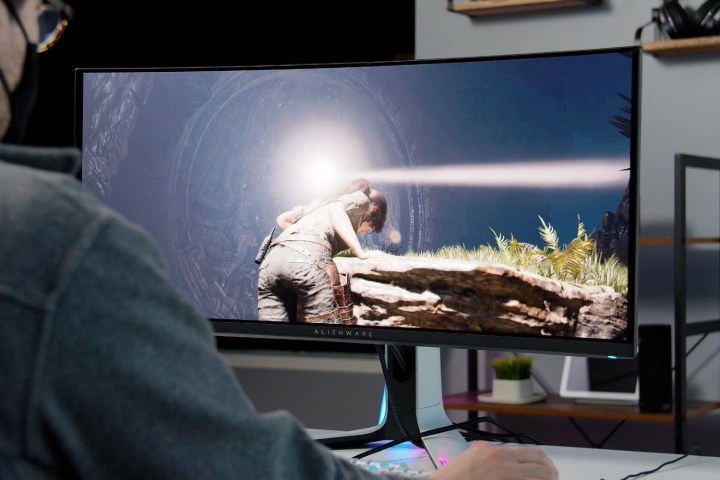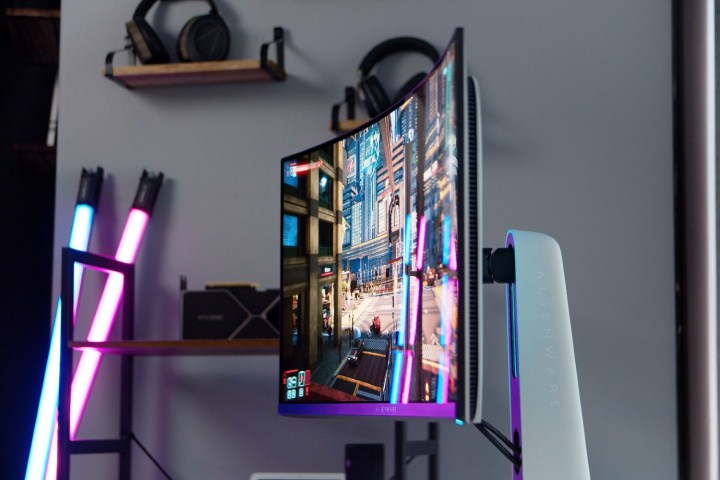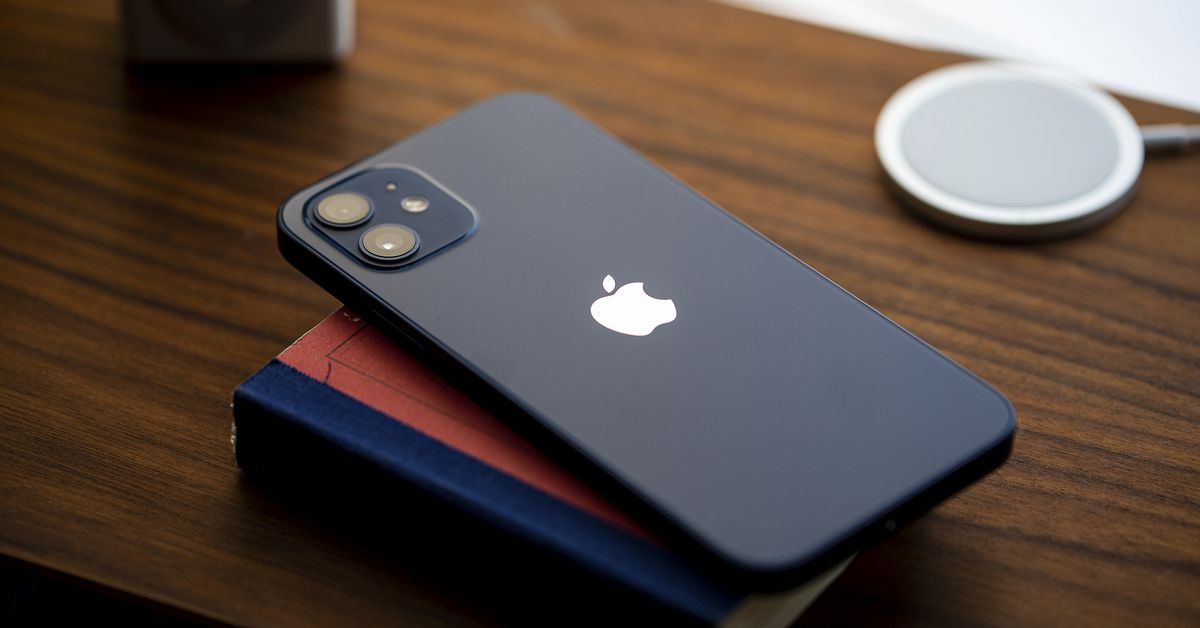It’s finally time to stop worrying about OLED monitor burn-in
OLED monitor burn-in is a constant worry, but new reports only confirm that they're longer-lasting than people think.

By
Luke Larsen
November 23, 2023 6:30AM ![]()
 Digital Trends
Digital Trends“But what about burn-in?”
It’s the first question many people have when it comes to OLED monitors. And fair enough. It’s been a huge problem in the tech of the past, which is evident even in the terms we use. After all, what we’re talking about is not the burn-in of old CRT TVs, after all. What we’re really talking about is degradation. The stationary elements of a PC desktop environment are enough to make some worried.
But are these worries justified by actual testing and hard evidence? Well, not a ton — at least not so far.
After all, the latest crop of OLED monitors have only been out in the wild for a few years now. It’s clear that these new OLED monitors don’t have a dramatic problem with burn-in that would cause problems within the first year or two, certainly. And beyond those couple of years, long-term evidence is hard to come by.
The publication RTINGS has been conducting “long-term” stress testing on OLED panels, and its most recent report reveals some interesting results — though you need to be careful about how you interpret the findings. For the test, the outlet looked at three popular OLED gaming monitors — including our beloved Alienware 34 QD-OLED. From there, the stress test involved running a 16:9 video feed of CNN on these ultrawide monitors at maximum brightness to see how the pixels reacted over time. About 700 hours later, there was some noticeable wear in that central area of the display as compared to the black bars on either side.
Don't Miss:
That sounds bad, but even RTINGS calls out two crucial considerations. First, the report indicates that even this amount of wear wasn’t actually noticeable in normal content. Secondly, switching to full-screen mode on these ultrawide panels actually reversed some of the damage done, meaning it wasn’t actually permanent damage at this point in the testing cycle. “Since we’ve switched to full-screen mode, the difference between the sides and the center has lessened,” the video states. In addition, long cycle refreshes also helped reduce the appearance of wear.
Most importantly, this stress test is completely unlike how I can imagine anyone is actually using these monitors. Yes, if you attempt to damage these panels, they are damageable. But throw in screen savers, pixel shifting, and giving the pixels time to reset, and there’s a lot of unaccounted data points that will extend the life span of these panels even more.
I’m not saying it’s a useless test, mind you. It’s fascinating to see, and I’m curious about what further testing will show.
 Digital Trends
Digital TrendsThe only part that I disagree with are the conclusions made at the end of the video, saying that these OLED monitors should be used exclusively for gaming. That’s just not good advice — not to mention the fact that, again, this is not how people use PC monitors. RTINGS even has its own in-depth report about the degradation of LCD panels as well, showing that no displays are safe from degradation over time.
In the written report, RTINGS has a more generous conclusion about these monitors, specifically mentioning how helpful panel refreshes can be: “After forcing a panel refresh on all three before taking the month six photos, there’s very little image retention on any of the panels.”
It’s not that there are no risks of “burn-in” with OLED monitors. But as our own testing has shown, as long as you’re using a mix of content at full screen — as most people do — and maintaining the panel appropriately with pixel refreshes and screensavers, there’s not a huge reason to be afraid of OLED monitors these days. And considering just how good they’ve become, you’d be missing out on quite a lot.
Editors' Recommendations
What reviews didn’t say about the Steam Deck OLED Alienware is playing coy with its two new QD-OLED monitors It’s time to stop ignoring your motherboard when building a PC Samsung’s Odyssey Neo G9 launches in October — if you can stomach its insane price Why I couldn’t live without an ultrawide gaming monitorLuke Larsen is the Senior editor of computing, managing all content covering laptops, monitors, PC hardware, Macs, and more.
We’re finally getting a 4K OLED gaming monitor, and it’s coming soon
Dough has just unveiled an interesting monitor. The Spectrum Black is a 32-inch 4K OLED screen that also serves up 240Hz refresh rates. Those specs might make it one of the best gaming monitors in 2024, and it's not that far off, as it's slated for an April 2024 release. And, if the stars align, it looks like Dough's display might be the first of its kind to come out.
The monitor has a simple design, but it's the specs that make it stand out. On paper, it sounds like a solid gaming monitor, with 0.03ms gray-to-gray response times and the aforementioned high refresh rates. Locked in a 32-inch screen, it should provide sharp imagery and solid contrasts, as it's VESA DisplayHDR True Black 400-certified.
Alienware just changed everything you know about its desktops
Alienware's flagship gaming desktop is getting a serious makeover. The new Aurora R16, which is available to purchase now, ditches the angular, obtuse design of Alienware's previous models in favor of a design that feels familiar yet -- if you'll excuse the pun -- alien.
That's clear by looking at an image of the redesigned Aurora R16 above. It's a mid-tower box, much unlike a machine like the Aurora R15, with its massive footprint and large plastic covering that makes it feel much larger than it actually is. the Aurora R16 fits in much better now with the standard crop of gaming desktops, though it still has some unique design choices.
It’s time to stop trying to play games without an SSD
Everyone owes Sony an apology. When the PS5 was announced and Ratchet and Clank: Rift Apart was shown off as exclusive for the platform, there was a barrage of finger-pointing at Sony over the game's next-gen exclusive status. The argument from Sony was that the game required the PS5's world-class storage interface, and anything less simply wouldn't work.
Now that the game is available on PC, I can see exactly what Sony was referencing. As you can see from Digital Foundry's first look at the game, it simply doesn't work on the PS4's slow, 5,400RPM hard drive.

 JaneWalter
JaneWalter 




































